This document explains multithreading in Java, detailing how multiple threads can execute concurrently to improve performance by reducing wait times and optimizing resource utilization. It covers thread creation, states, scheduling, synchronization, and programming models, emphasizing the benefits and implementation strategies of multithreading. Examples of thread management and potential issues such as data races are also discussed.
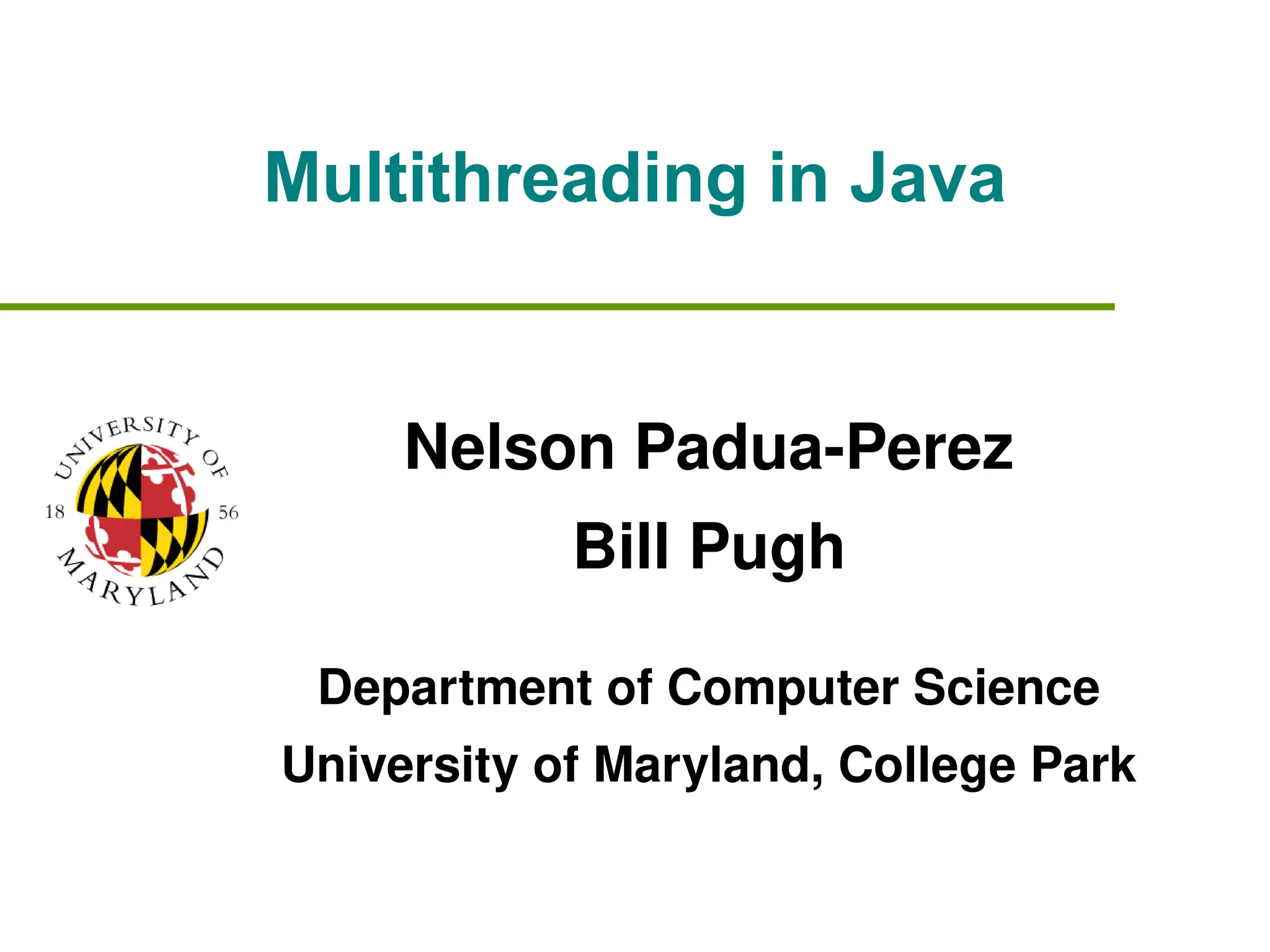
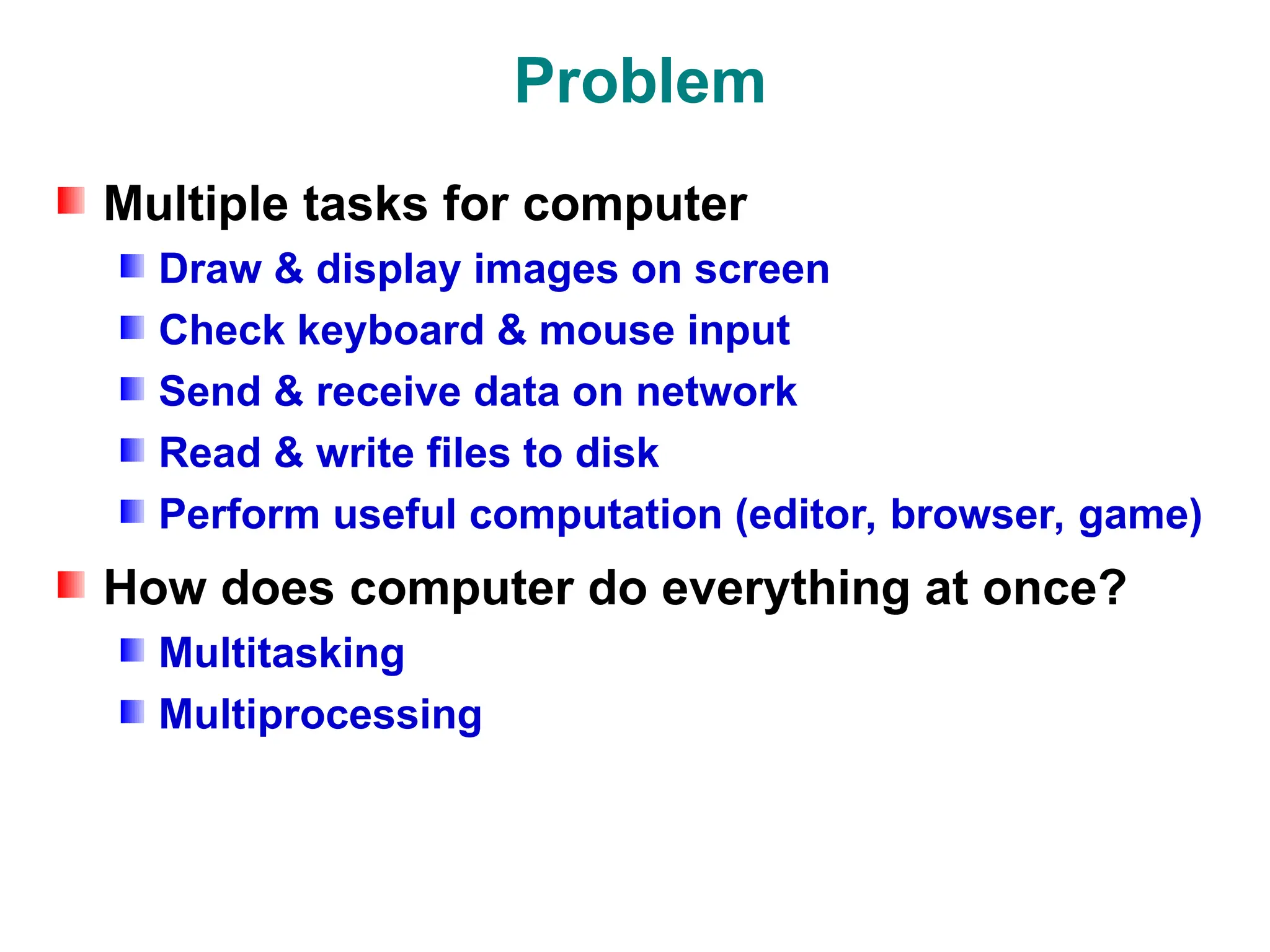
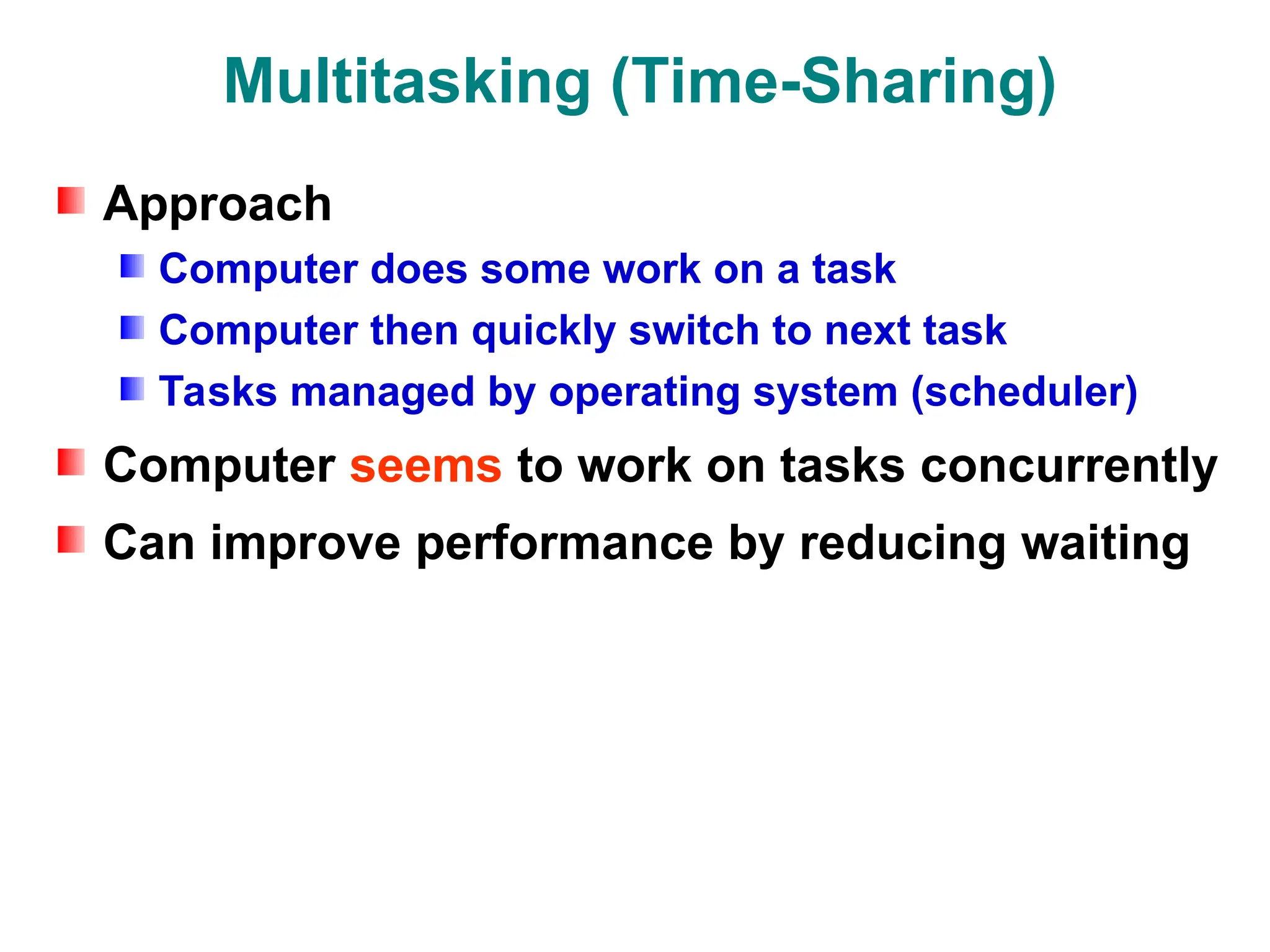
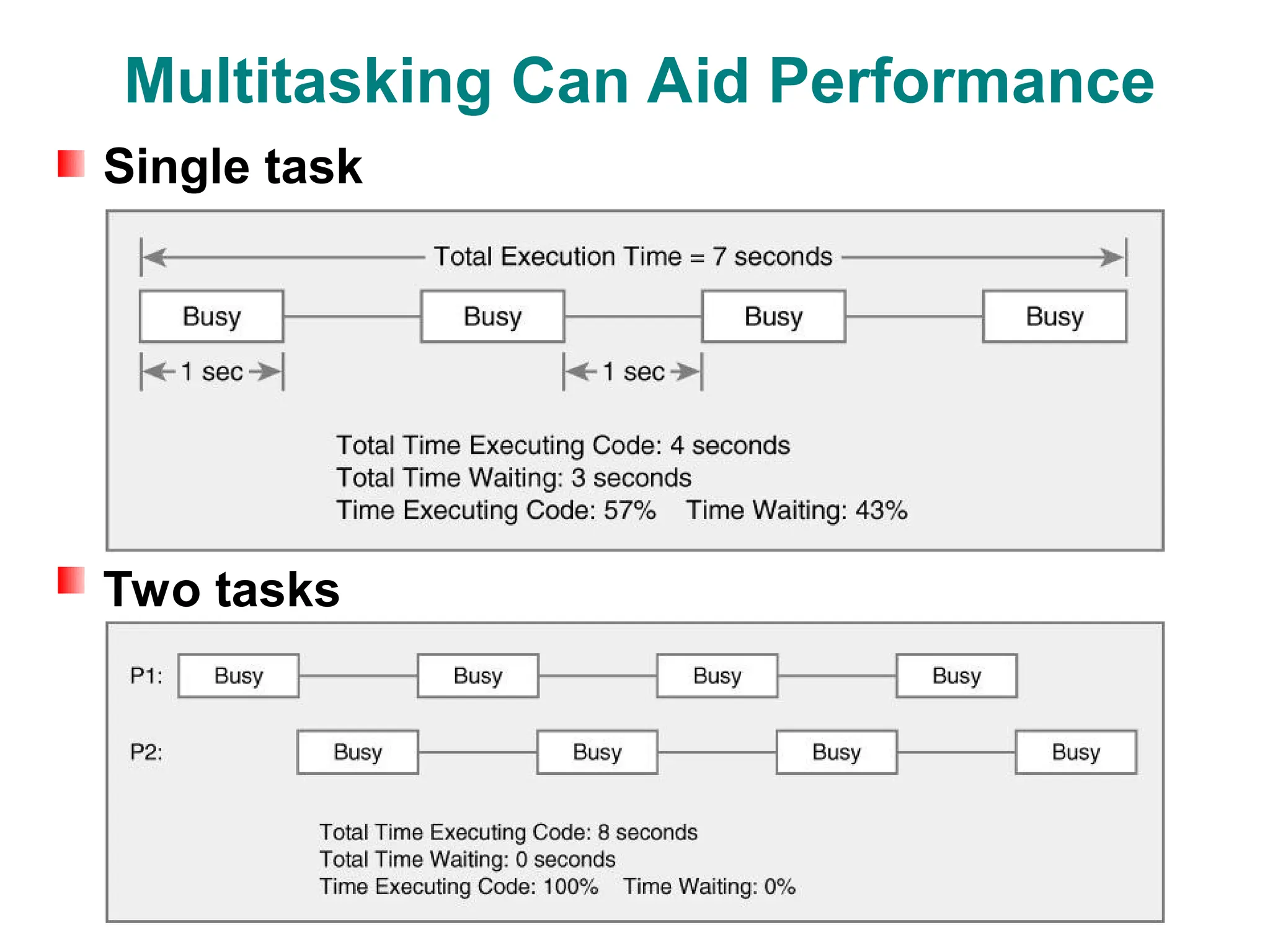
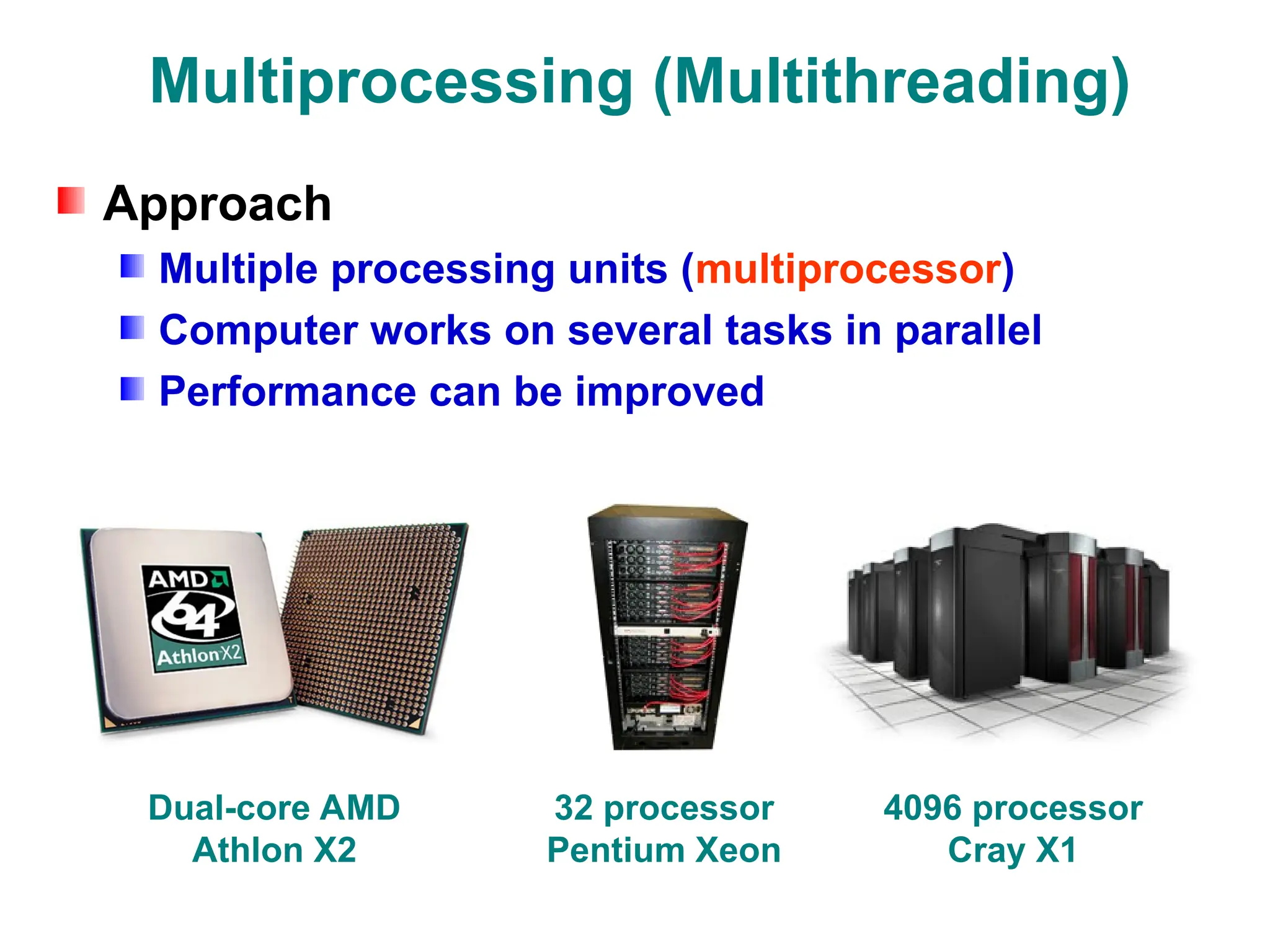
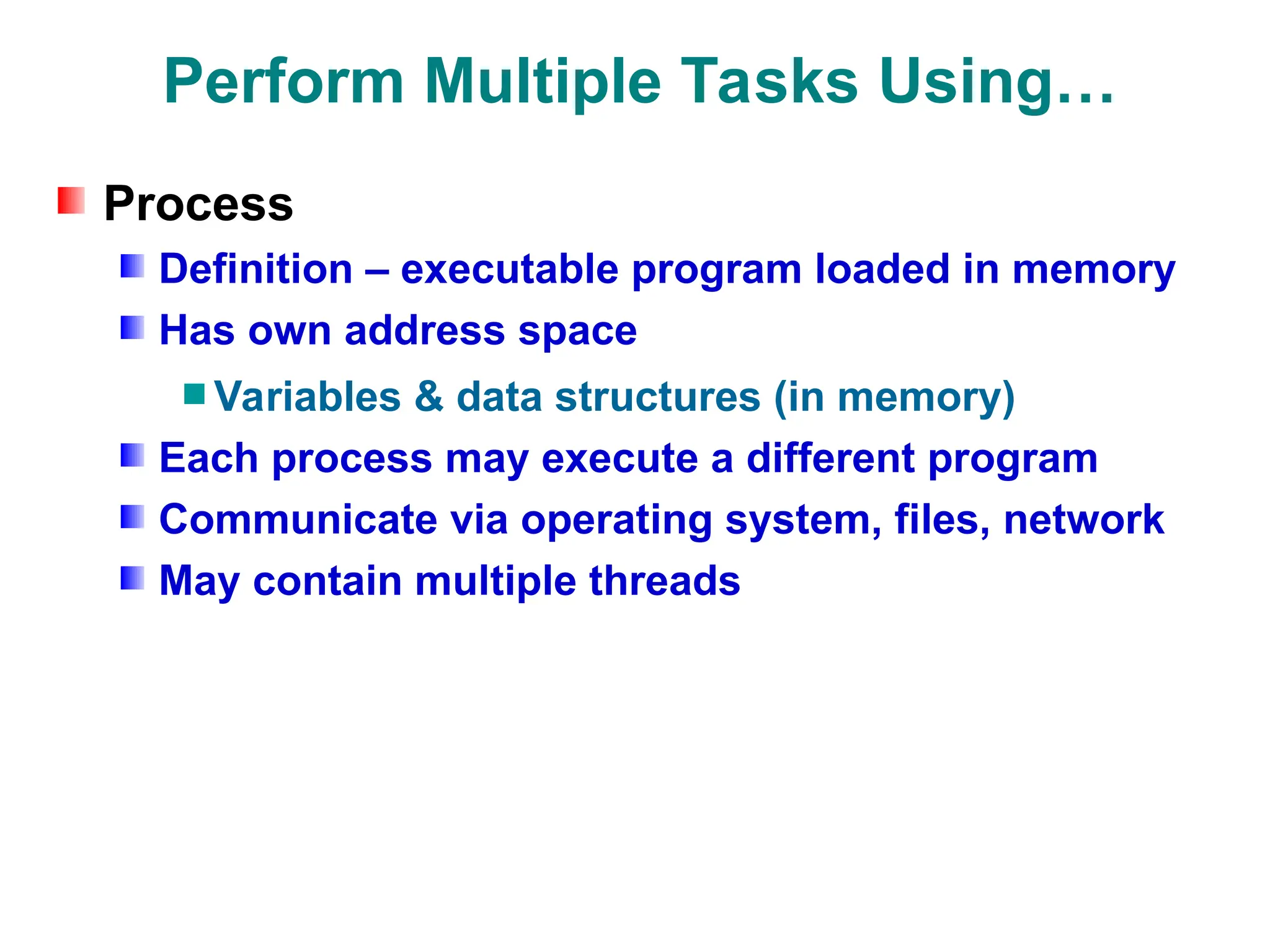
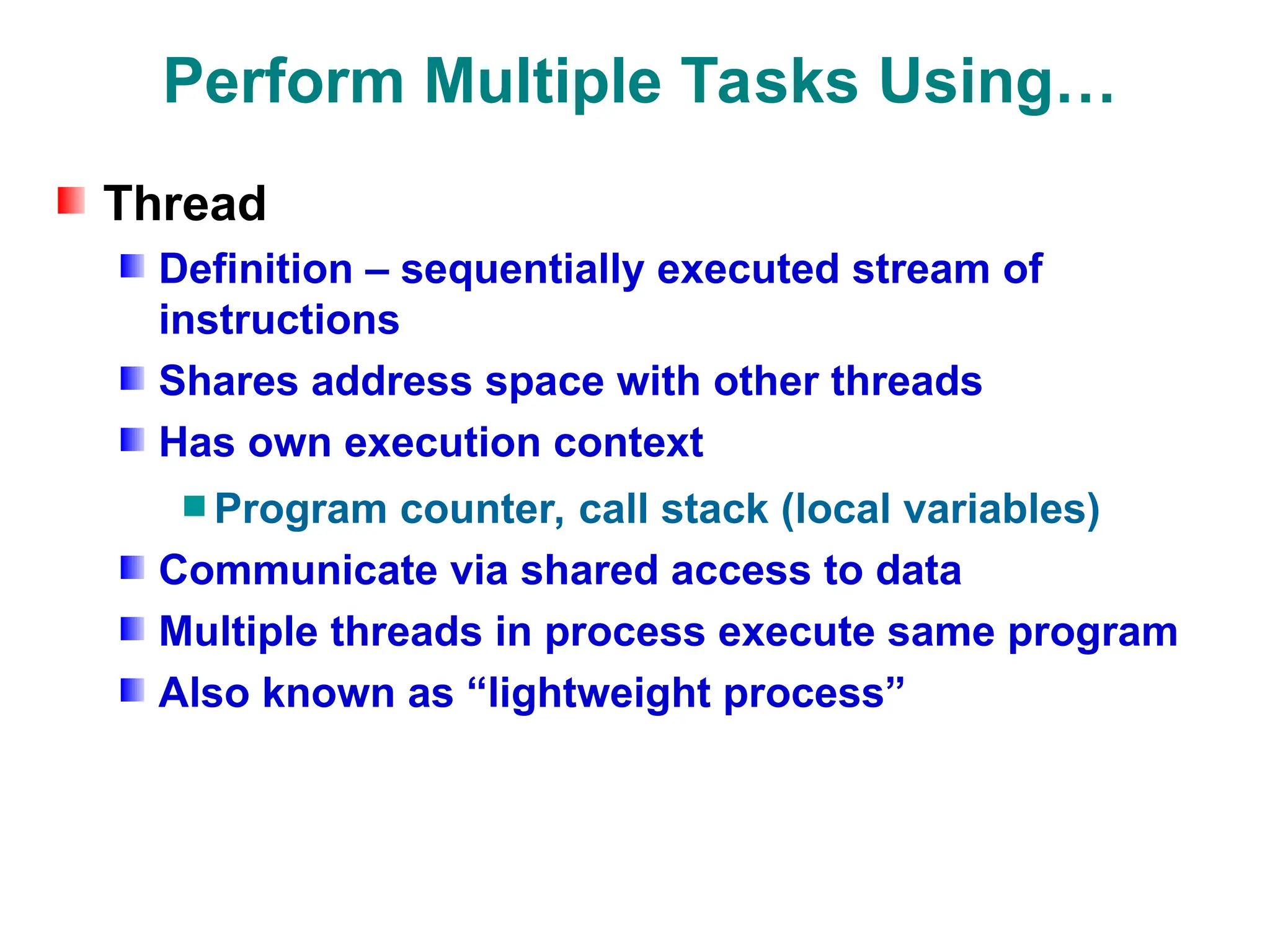
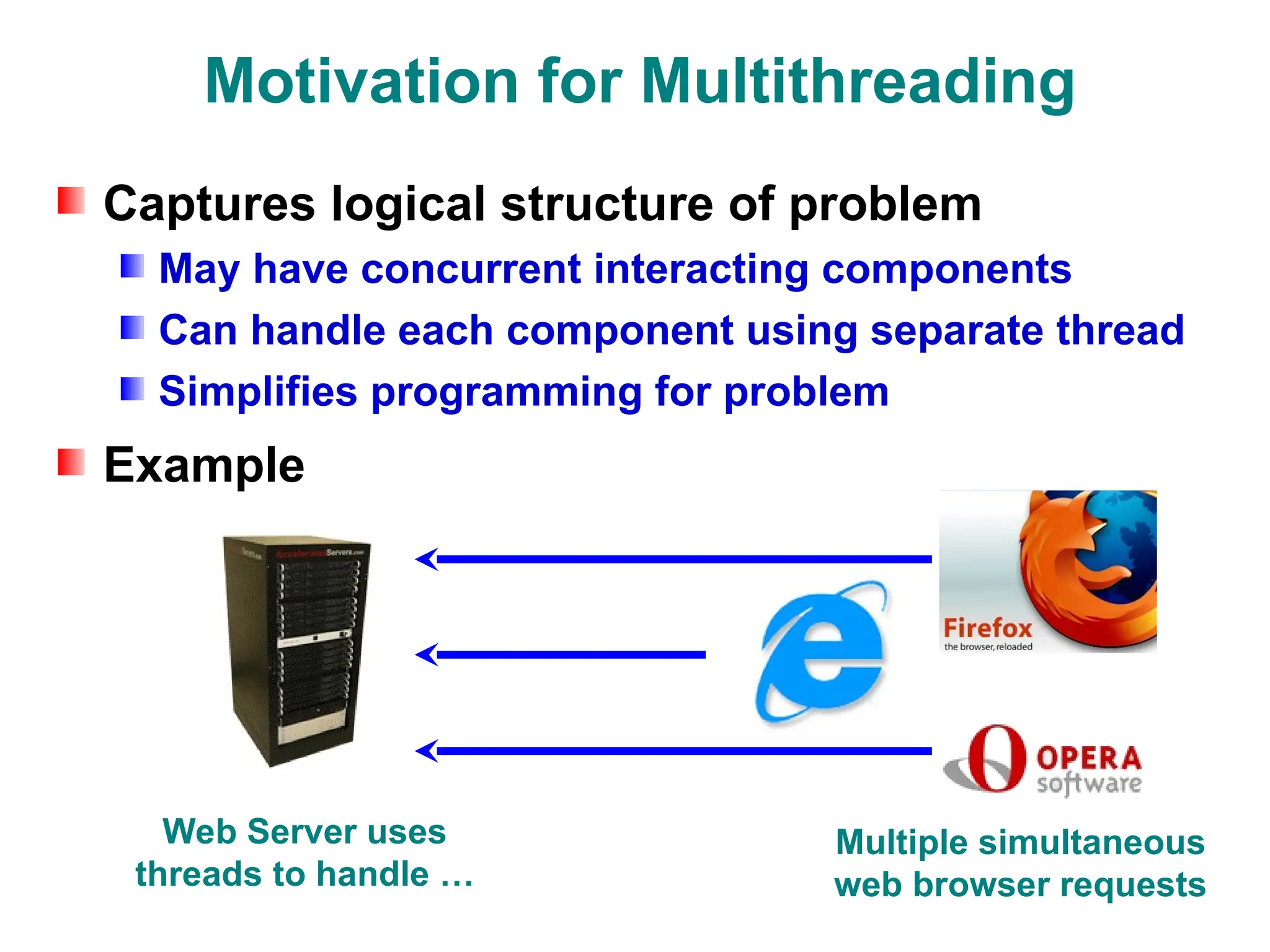
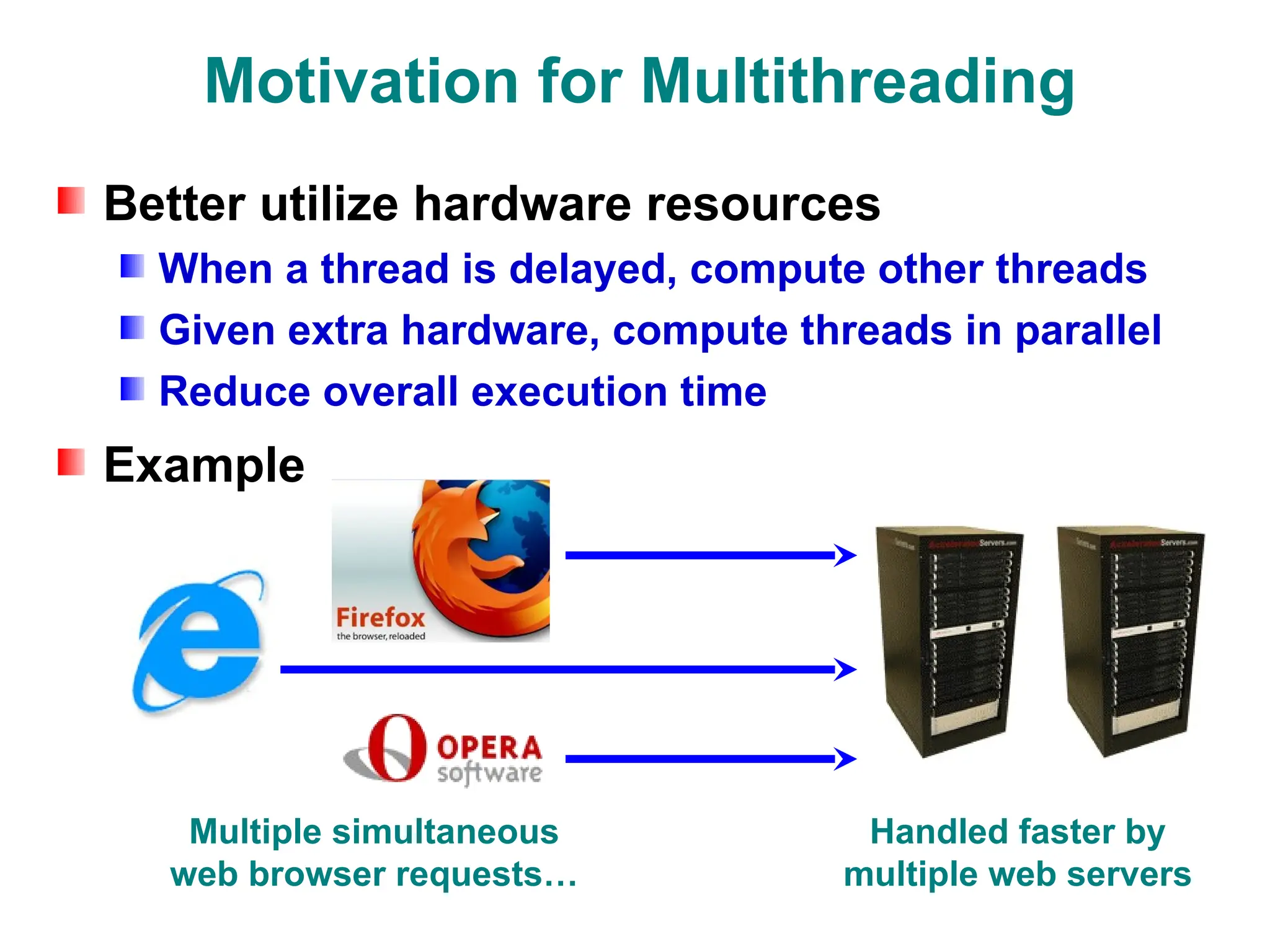
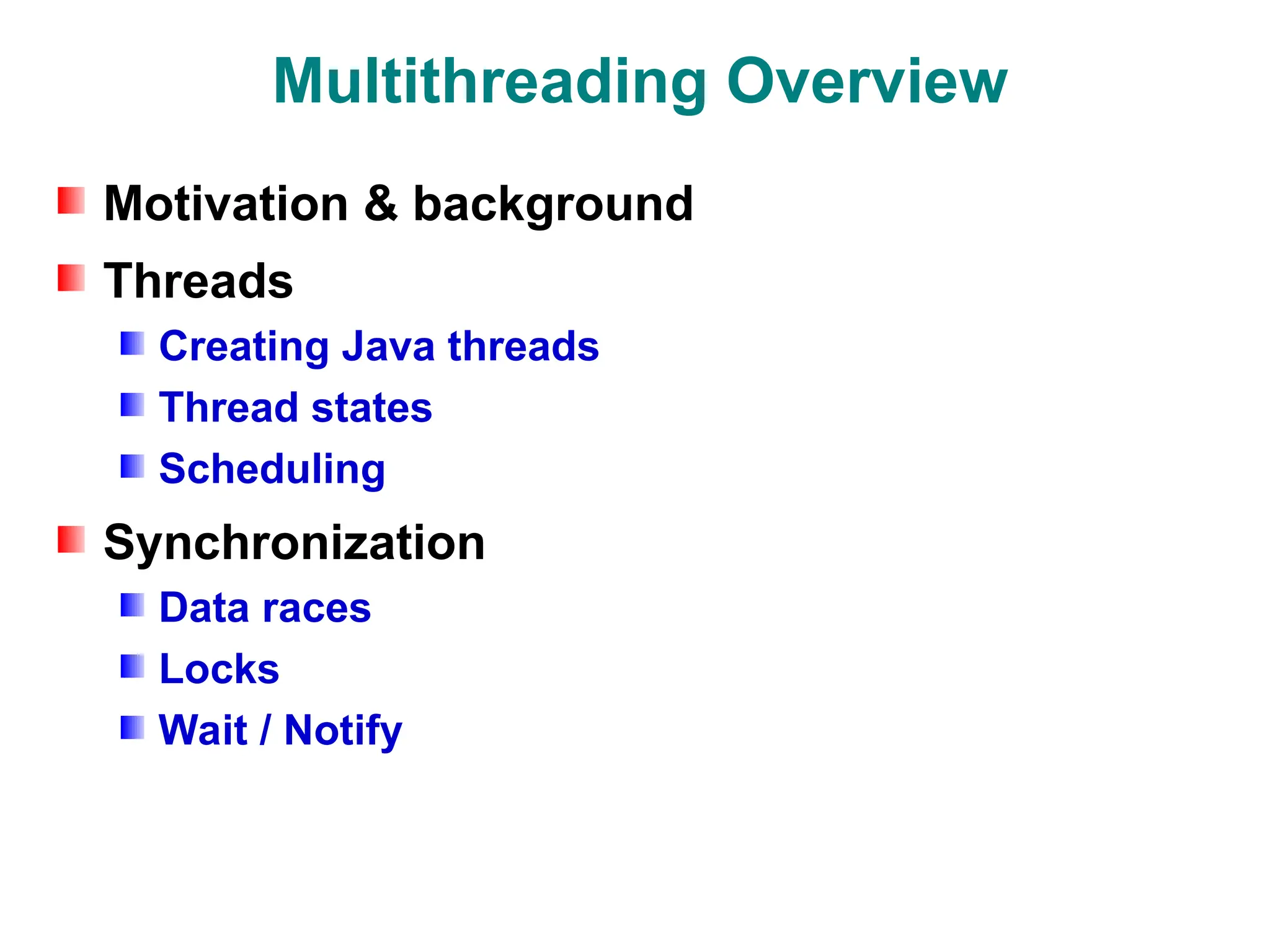
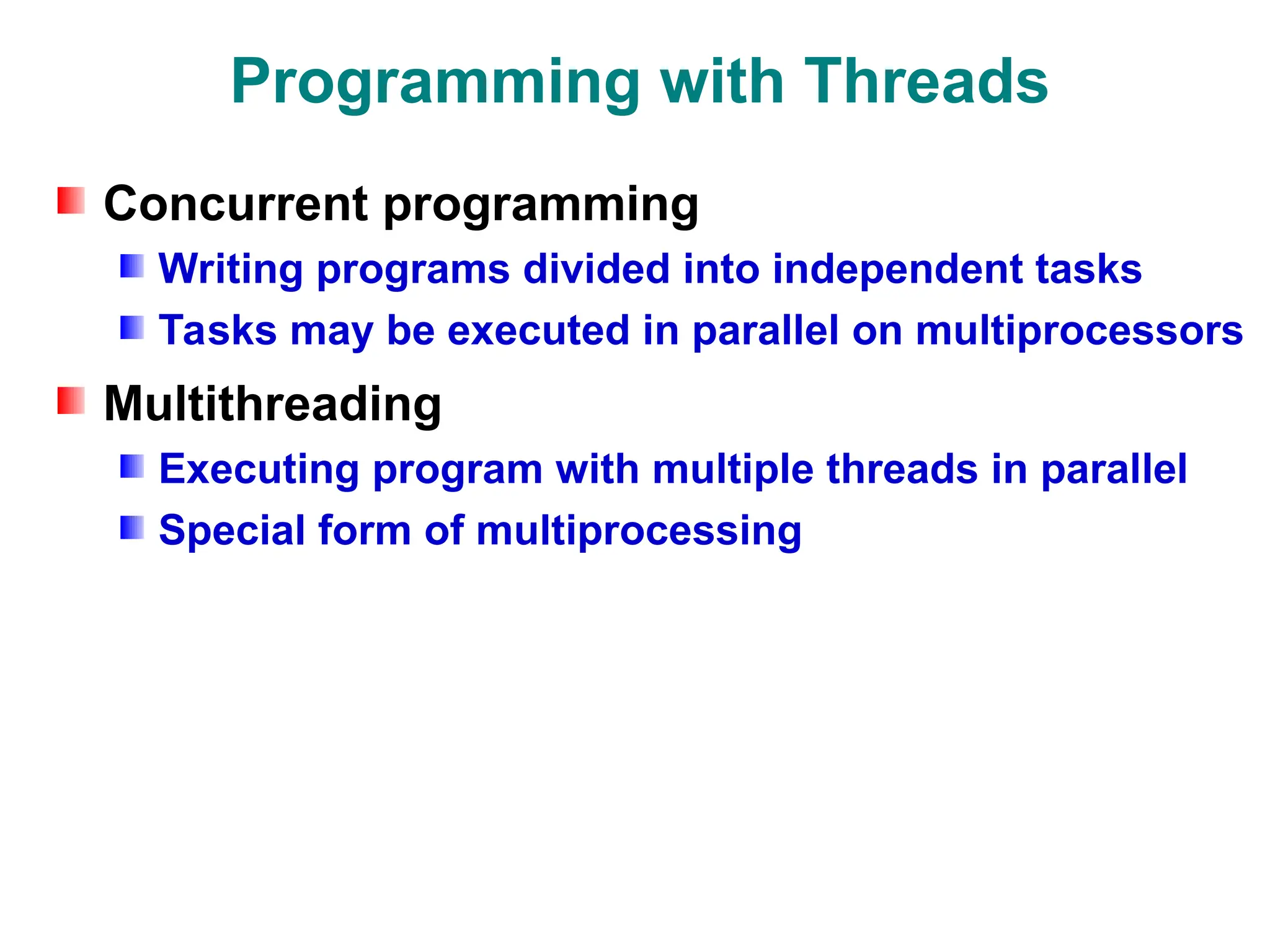
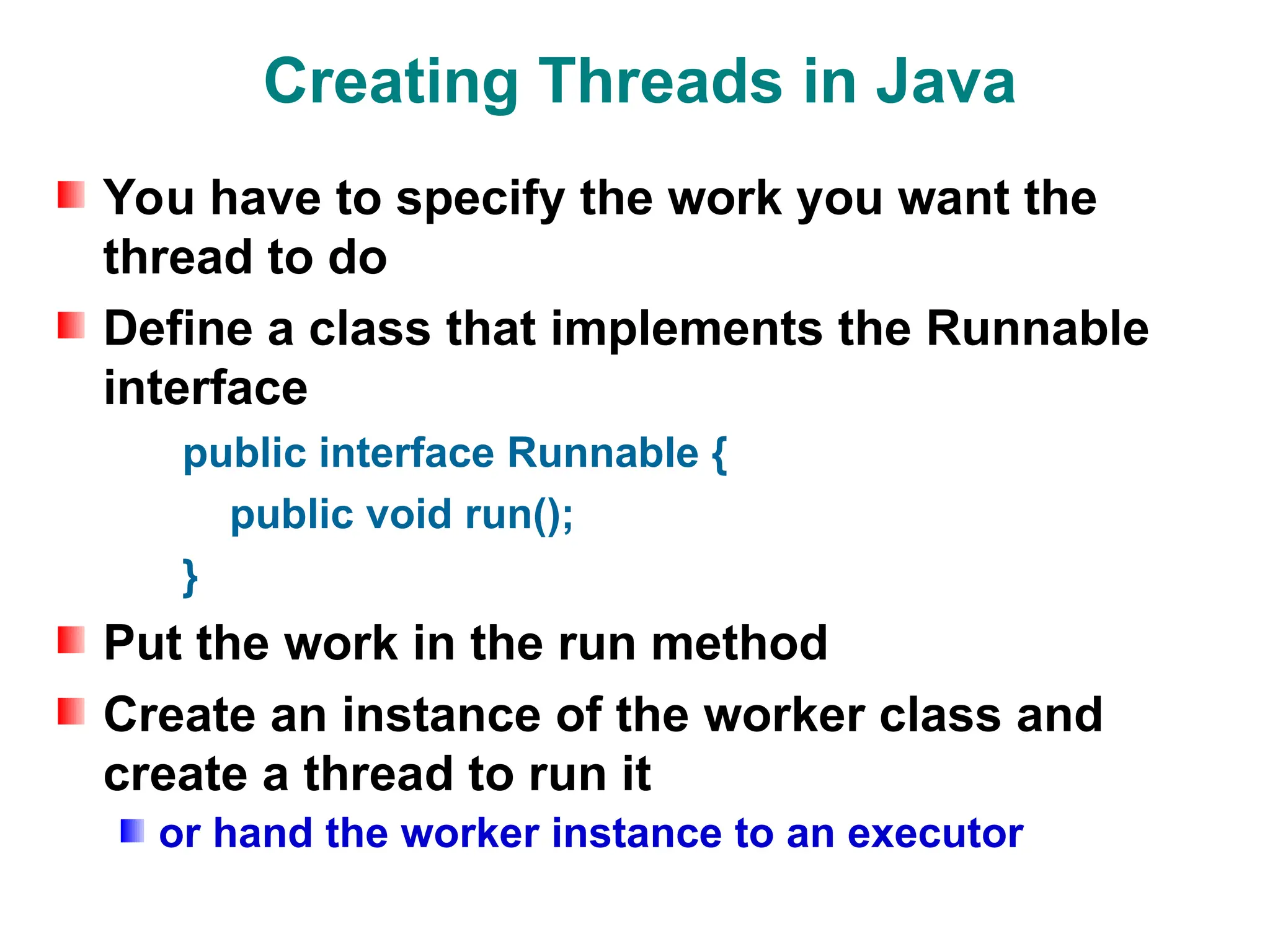
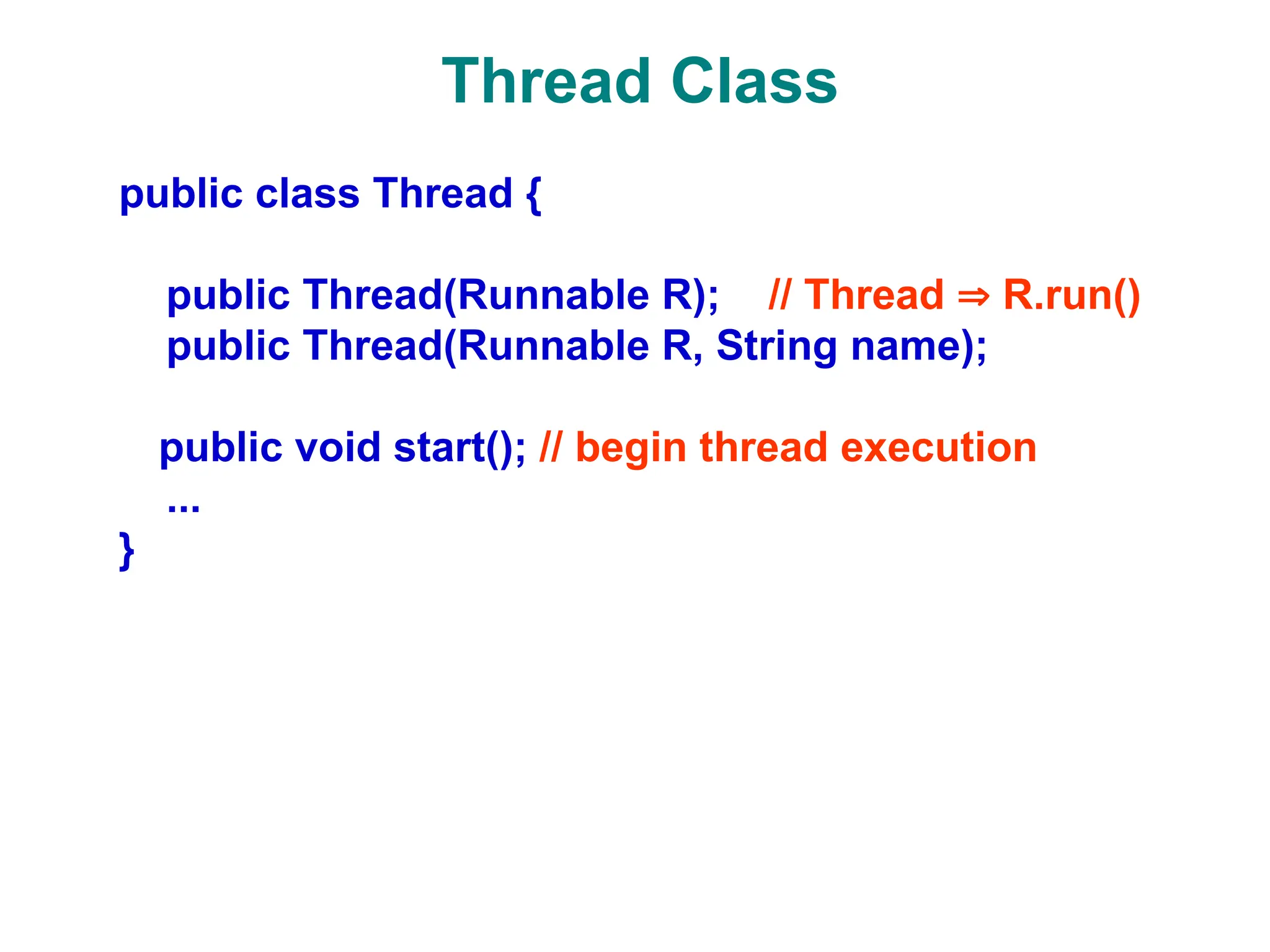
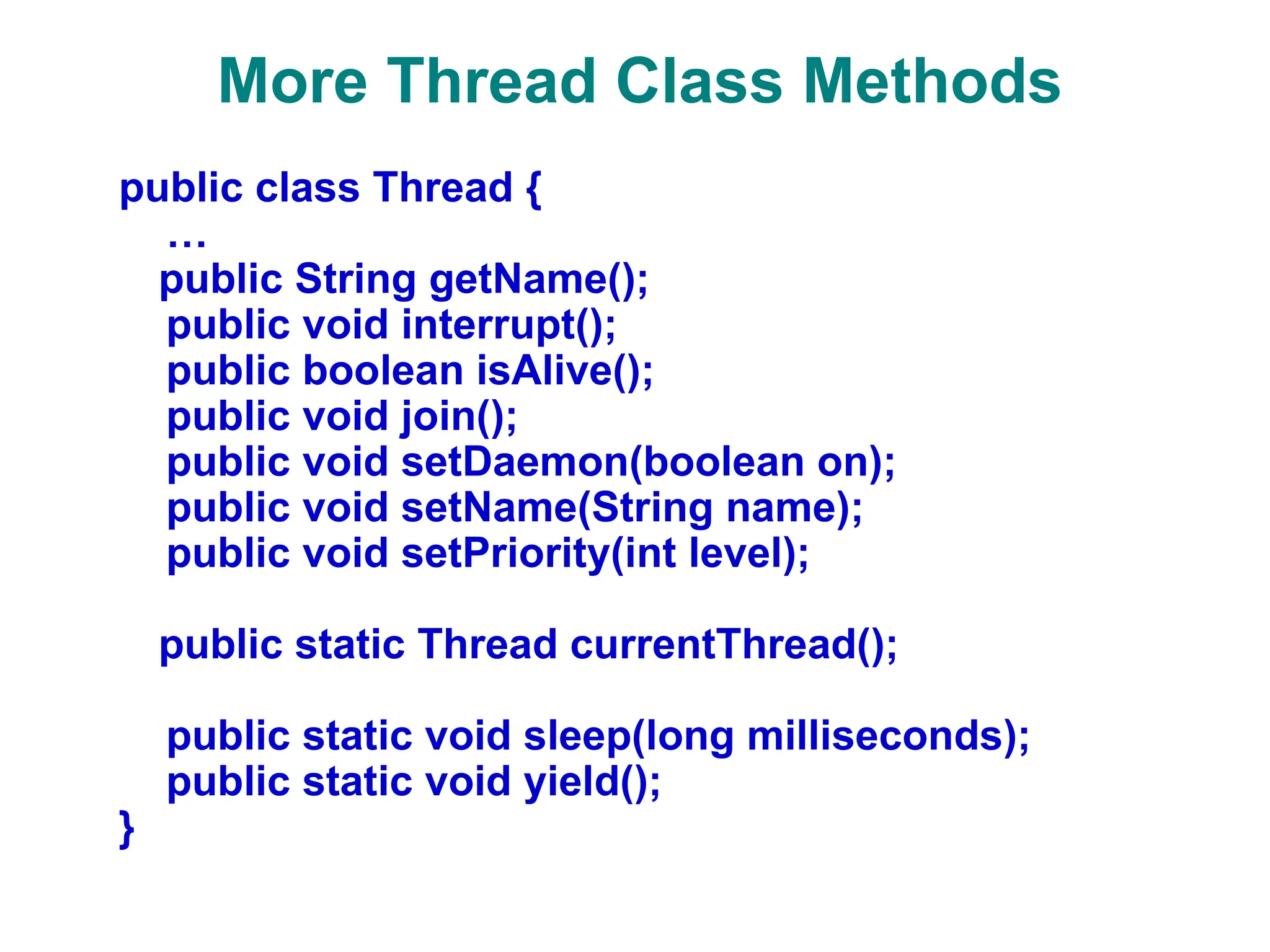
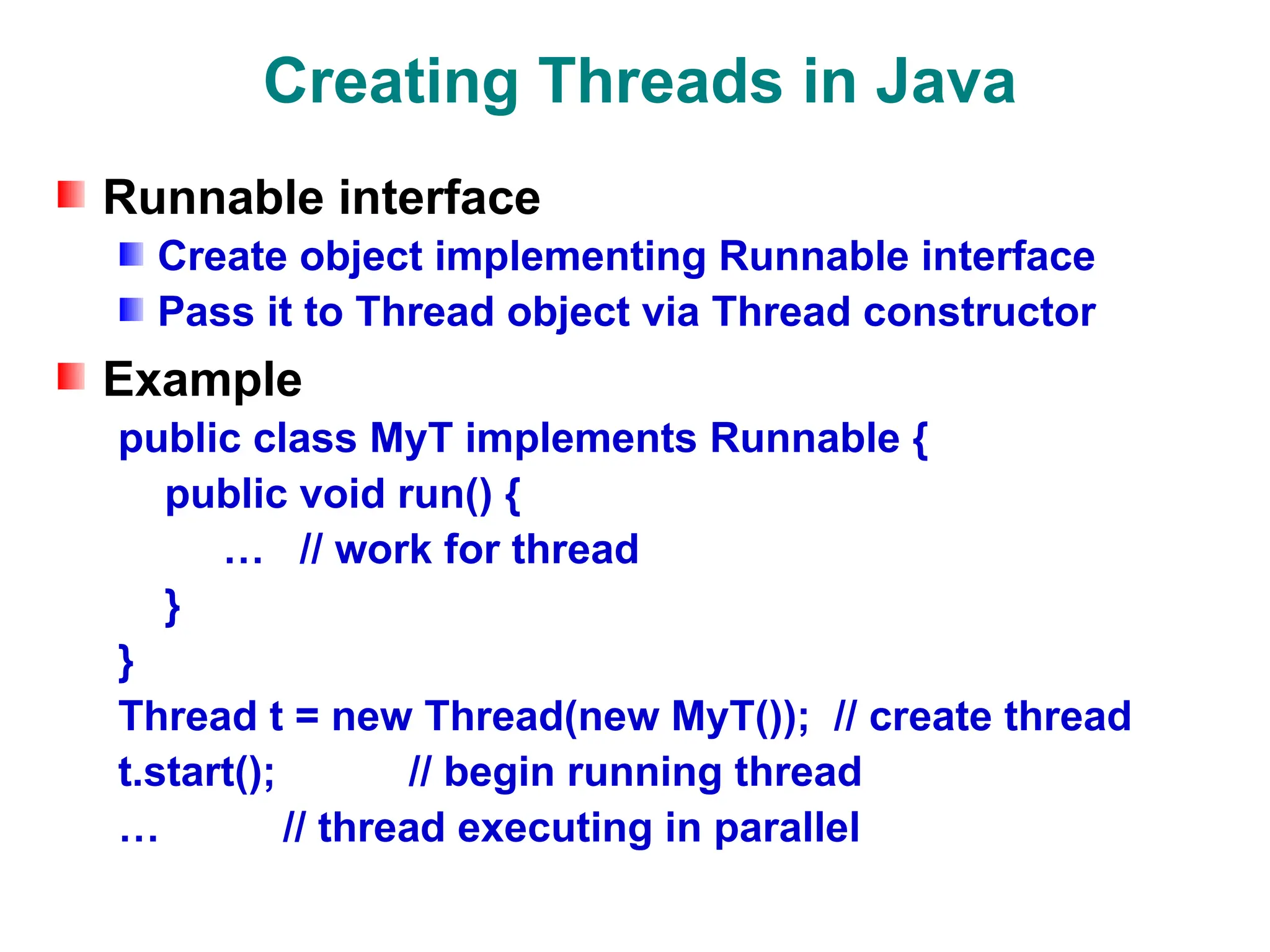
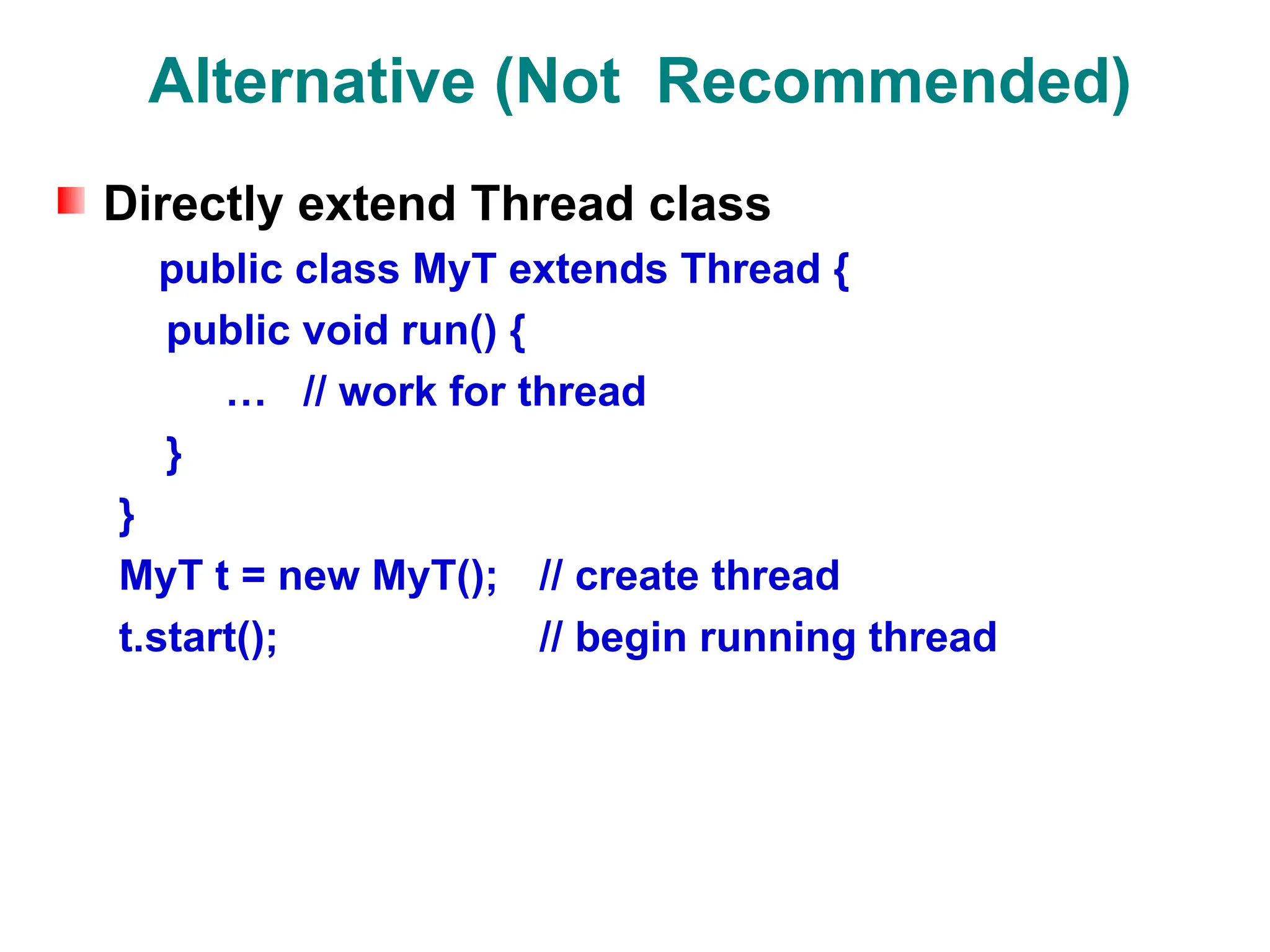
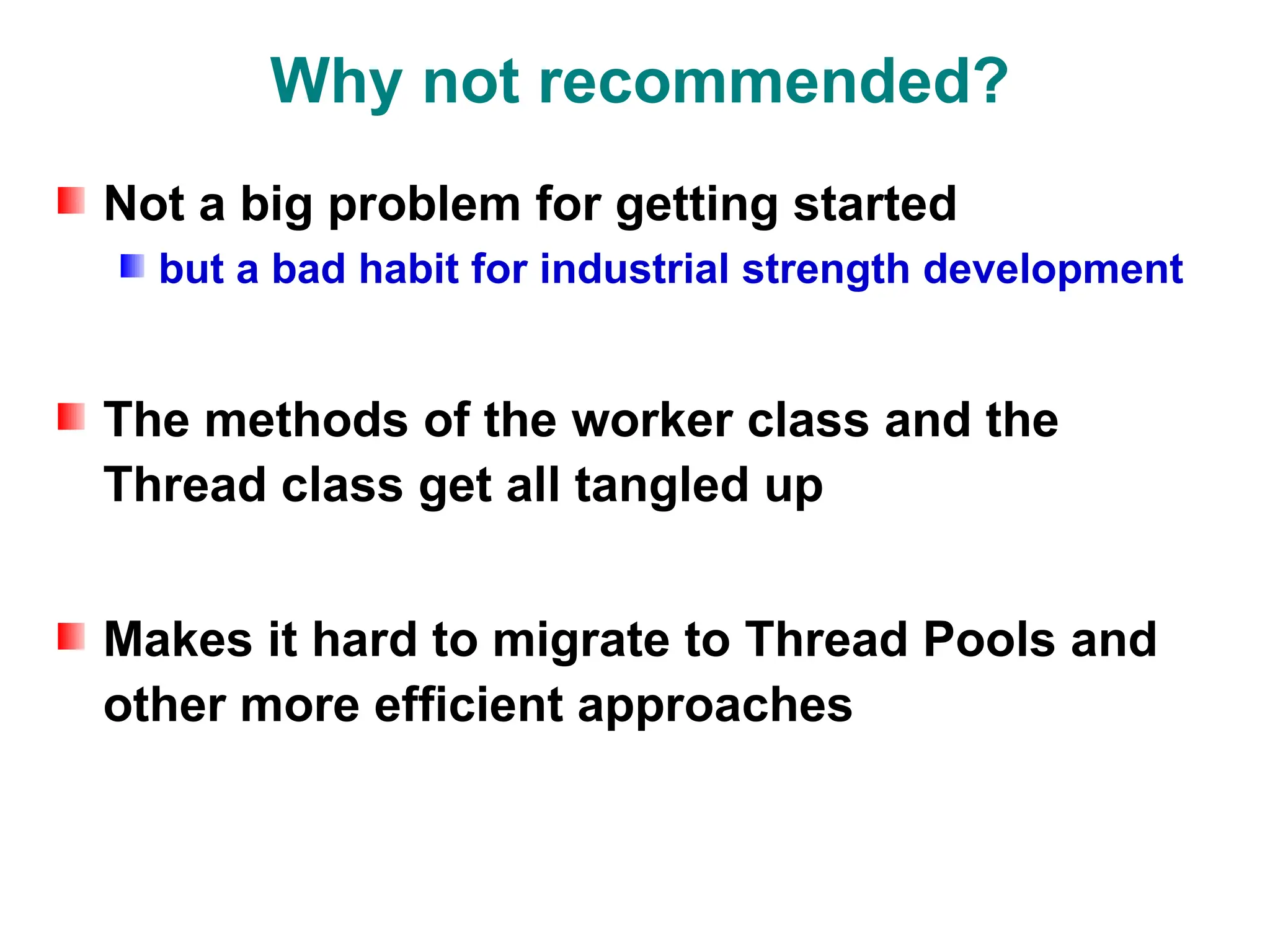
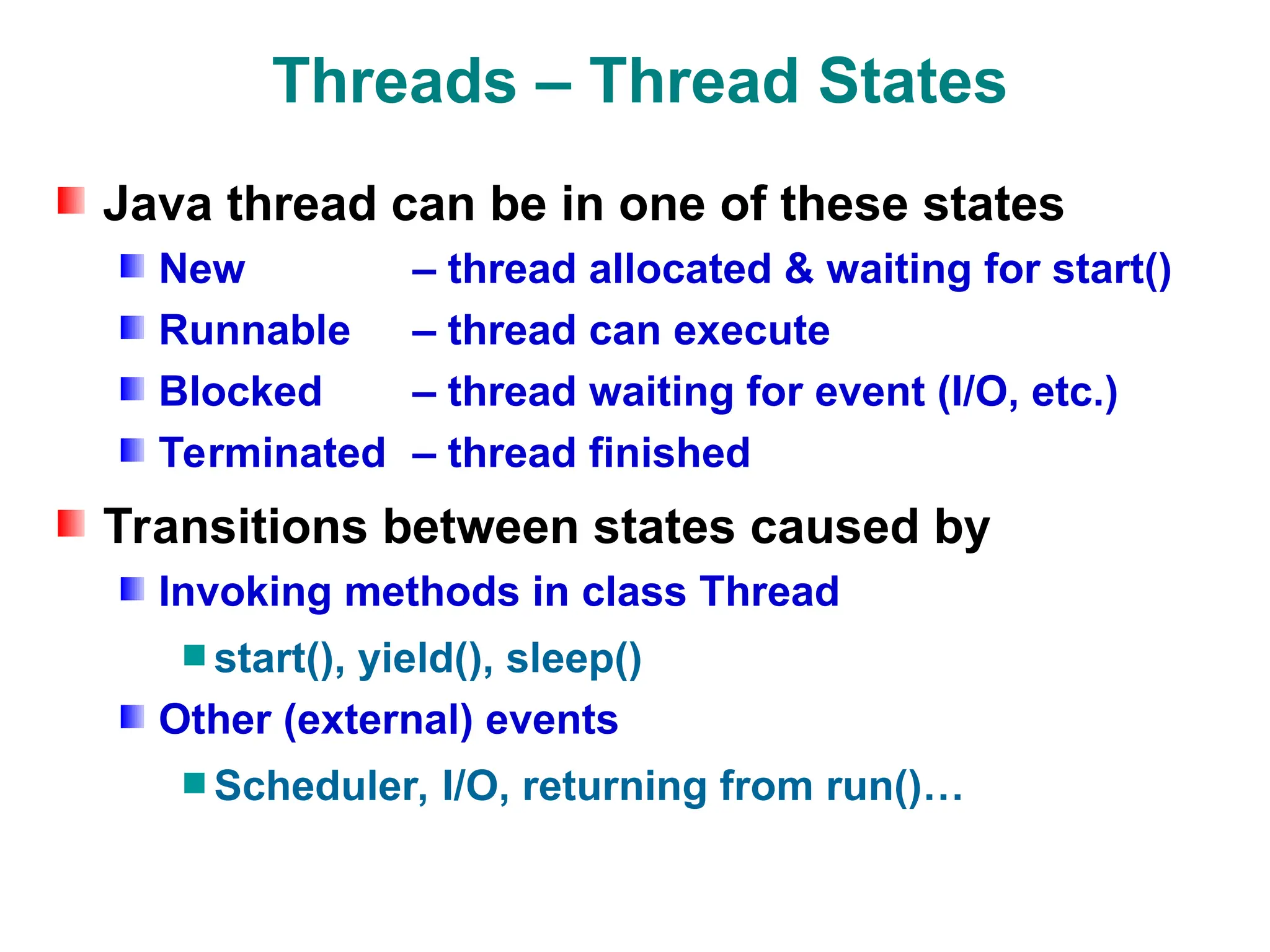
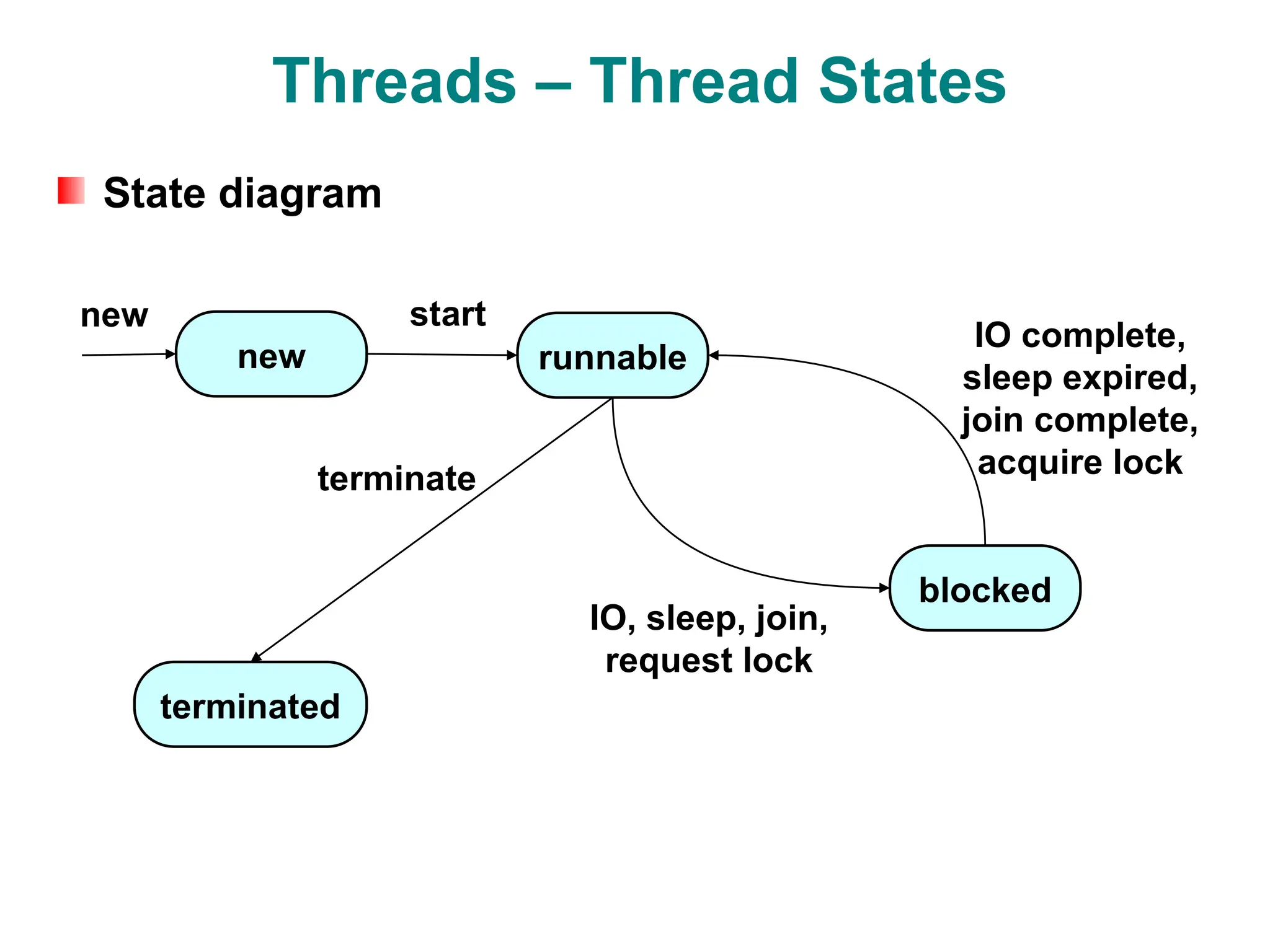
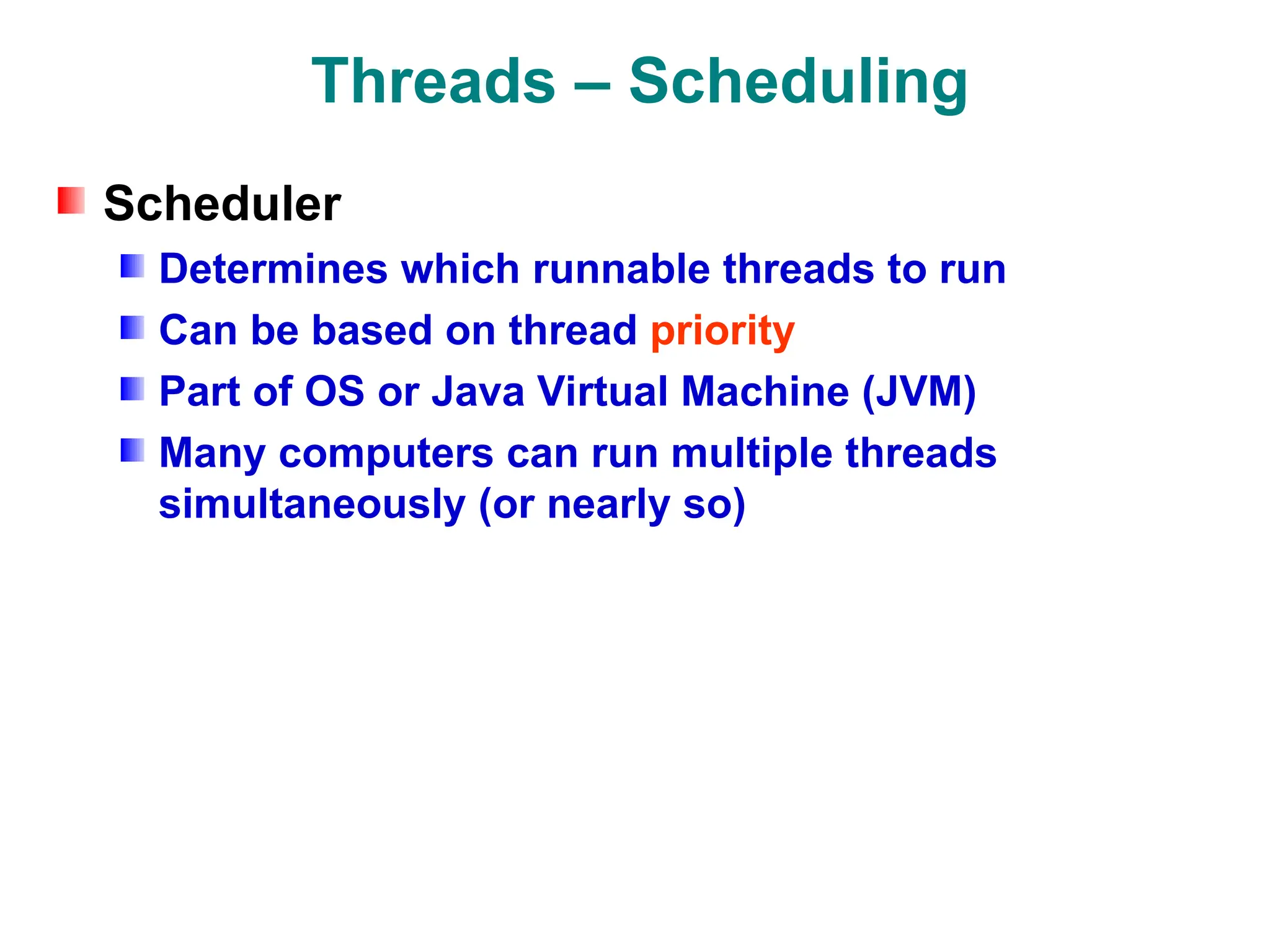
![Java Thread Example
public class ThreadExample implements Runnable {
public void run() {
for (int i = 0; i < 3; i++)
System.out.println(i);
}
public static void main(String[] args) {
new Thread(new ThreadExample()).start();
new Thread( new ThreadExample()).start();
System.out.println("Done");
}
}](https://image.slidesharecdn.com/lec34-241109152446-4cb24a98/75/JAVA-MULTITHREDED-PROGRAMMING-LECTURES-21-2048.jpg)
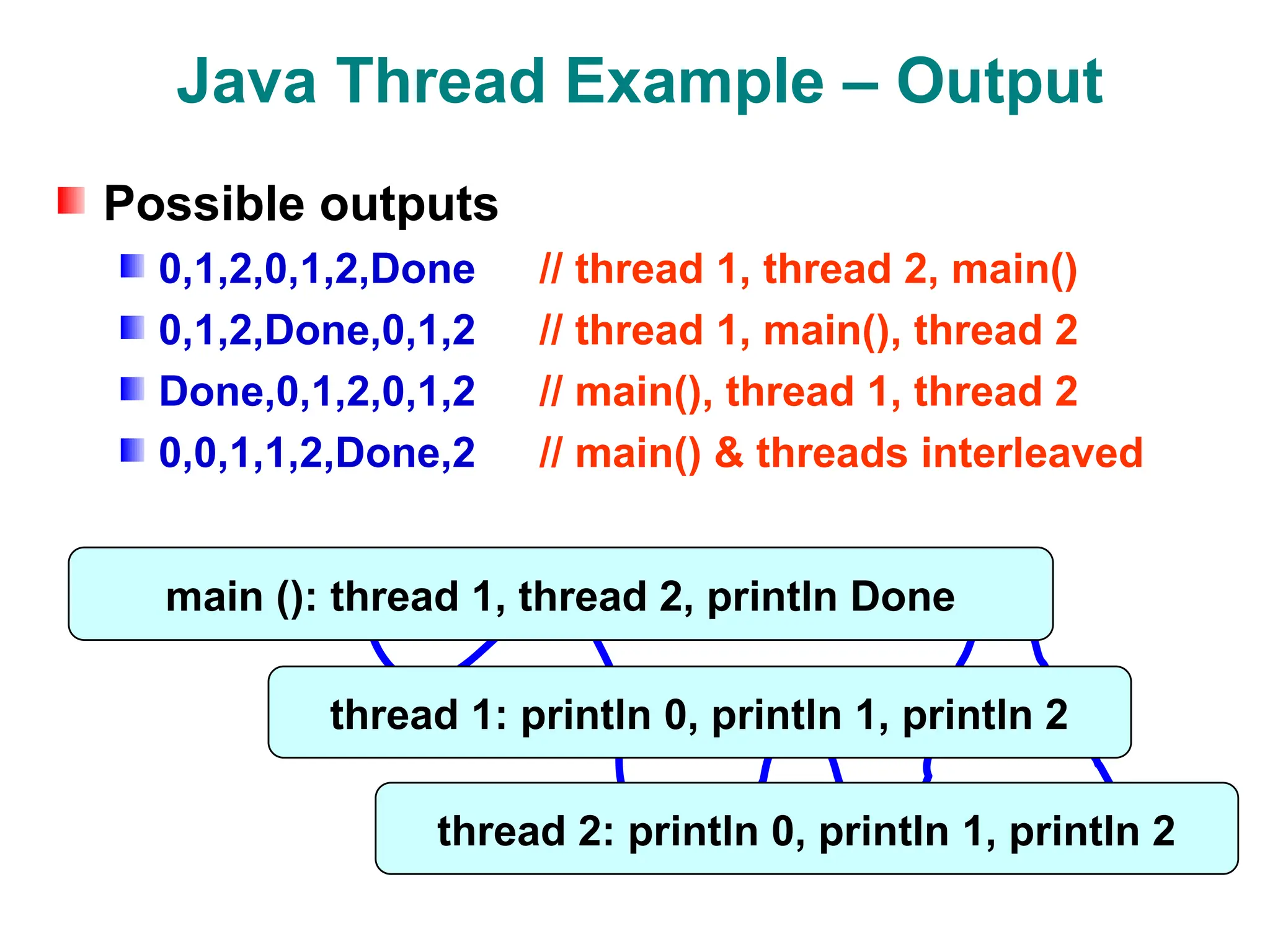
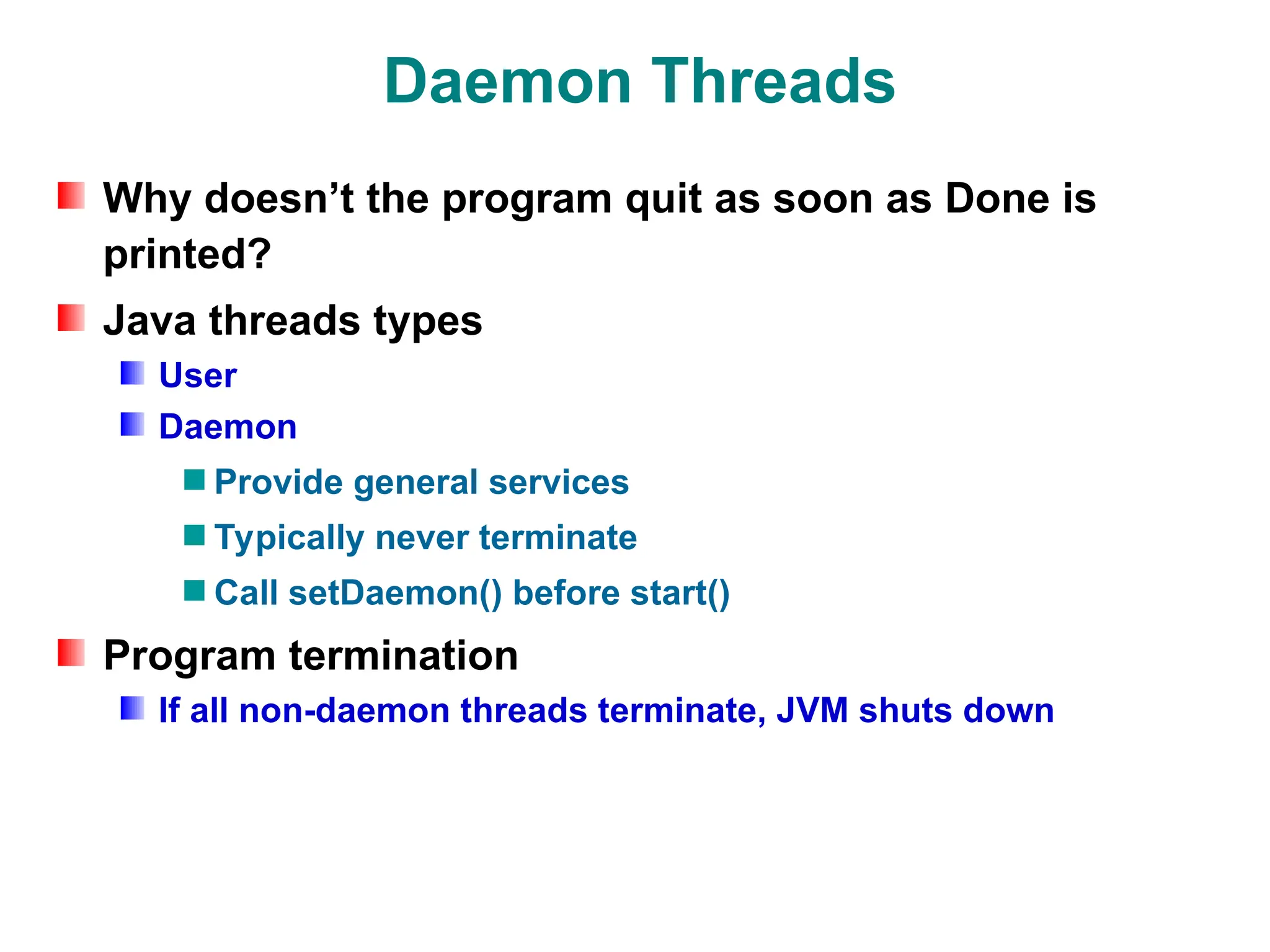
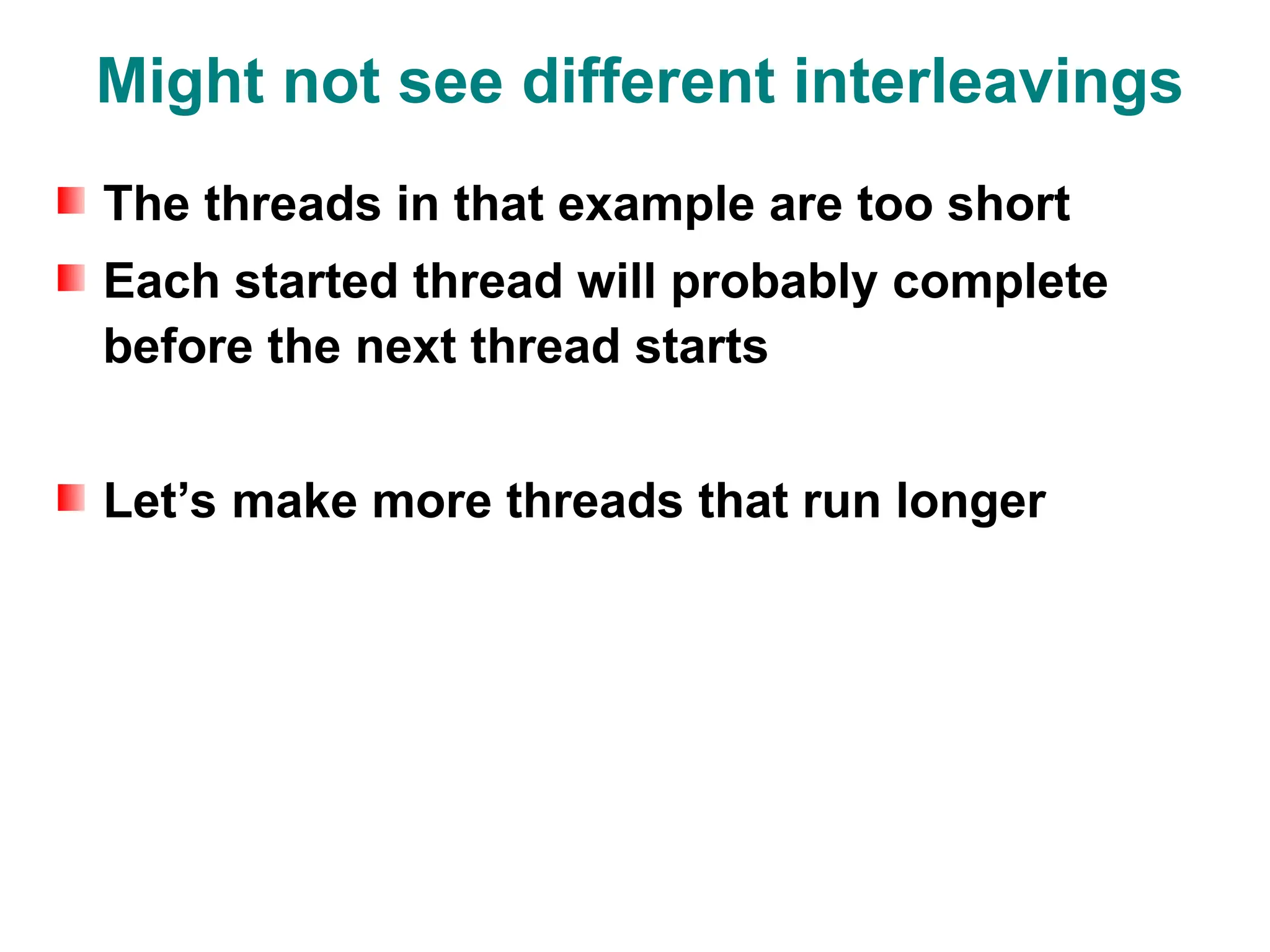
![Data Races
public class DataRace implements Runnable {
static volatile int x;
public void run() {
for (int i = 0; i < 10000; i++) {
x++;
x--;
}
}
public static void main(String[] args) throws Exception {
Thread [] threads = new Thread[100];
for (int i = 0; i < threads.length; i++)
threads[i] = new Thread(new DataRace());
for (int i = 0; i < threads.length; i++)
threads[i].start();
for (int i = 0; i < threads.length; i++)
threads[i].join();
System.out.println(x); // x not always 0!
}
}](https://image.slidesharecdn.com/lec34-241109152446-4cb24a98/75/JAVA-MULTITHREDED-PROGRAMMING-LECTURES-25-2048.jpg)
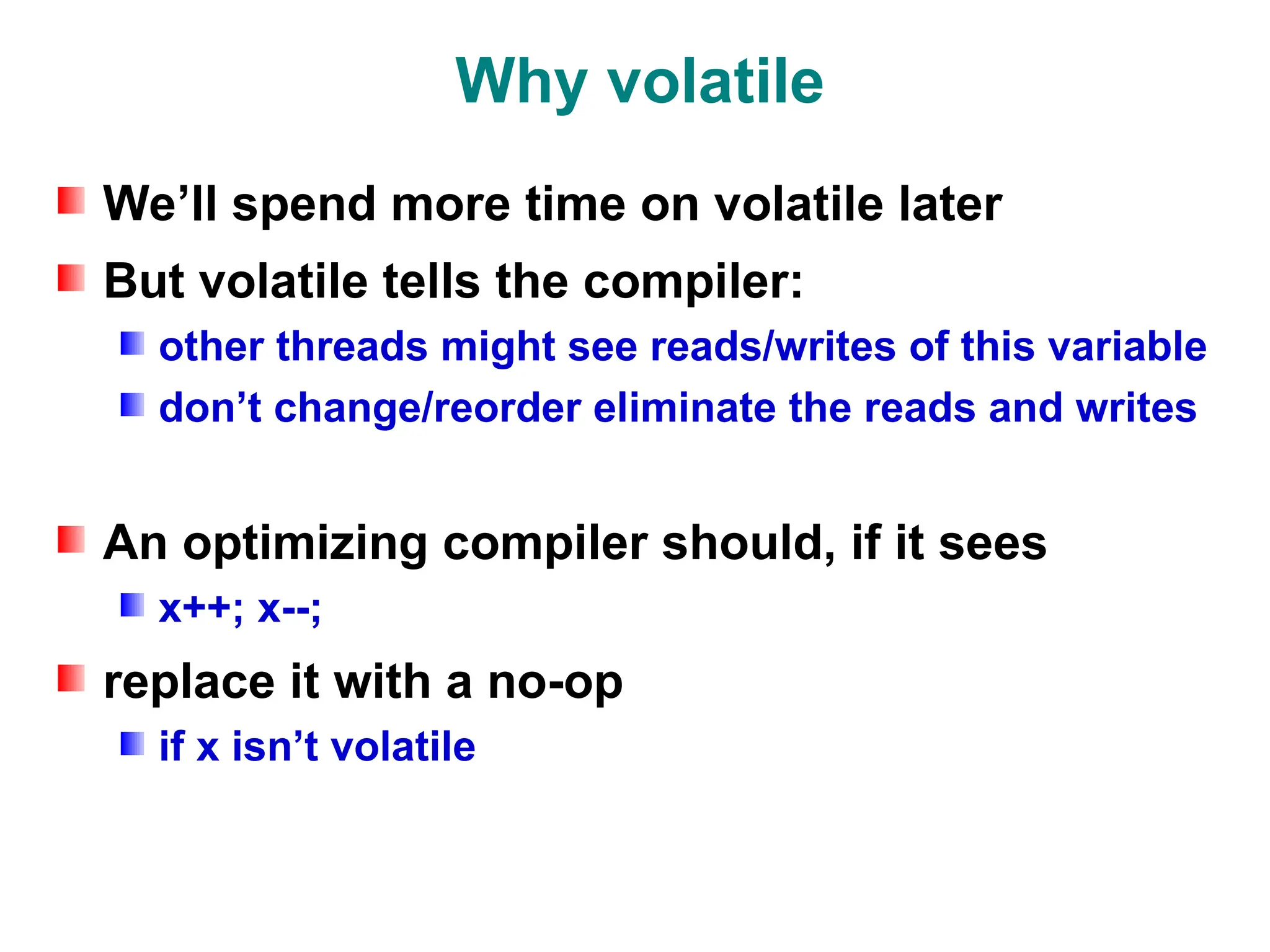
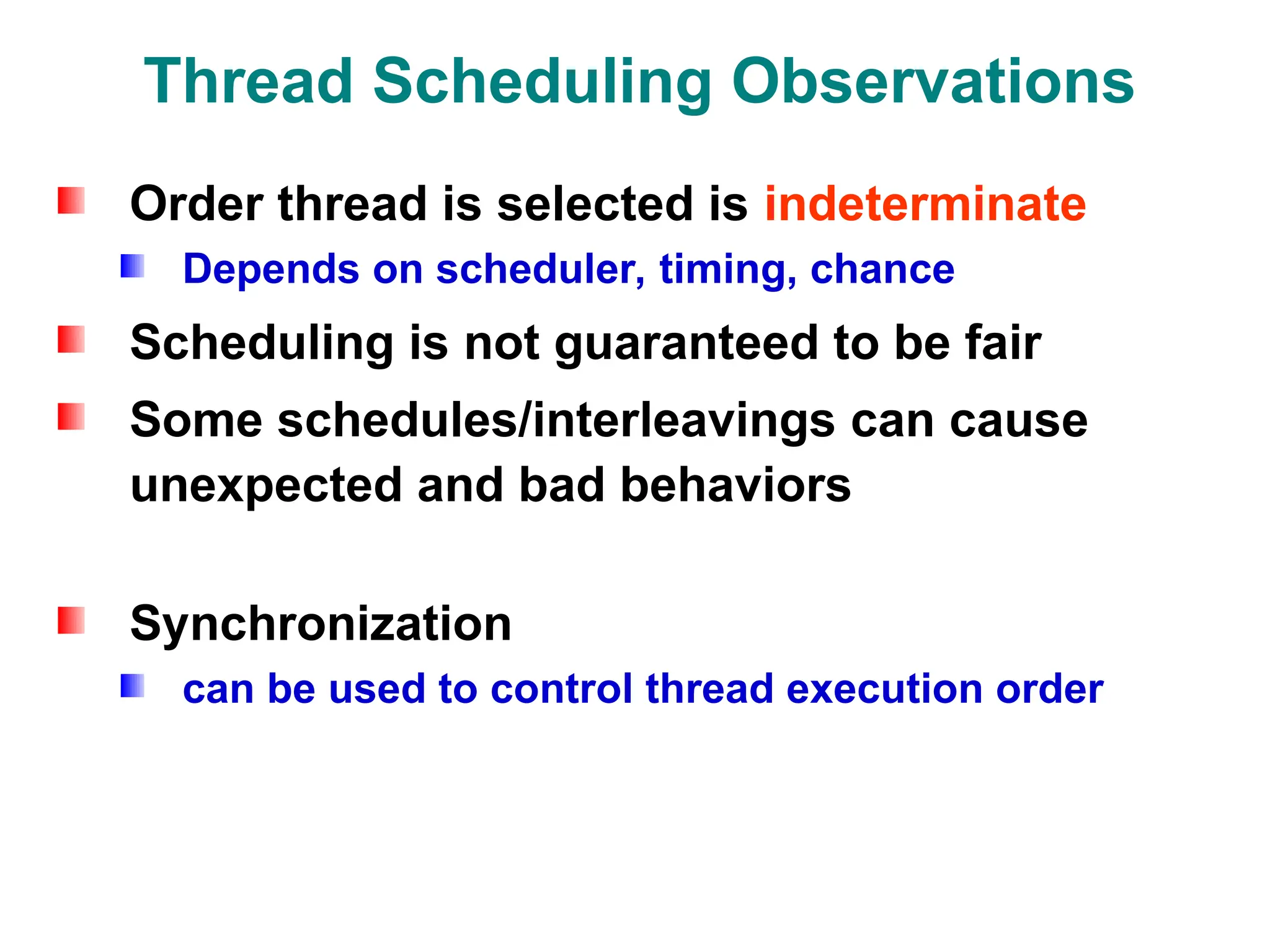
![Using Synchronization
public class DataRace implements Runnable {
static volatile int x;
static Object lock = new Object();
public void run() {
for (int i = 0; i < 10000; i++)
synchronized(lock) {
x++; x--;
}
}
public static void main(String[] args) throws Exception {
Thread [] threads = new Thread[100];
for (int i = 0; i < threads.length; i++)
threads[i] = new Thread(new DataRace());
for (int i = 0; i < threads.length; i++)
threads[i].start();
for (int i = 0; i < threads.length; i++)
threads[i].join();
System.out.println(x); // x always 0!
}
}](https://image.slidesharecdn.com/lec34-241109152446-4cb24a98/75/JAVA-MULTITHREDED-PROGRAMMING-LECTURES-28-2048.jpg)